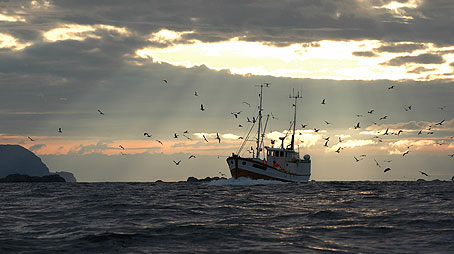| SEARCH |
-

Nov 17, 2015
Reflections on a three-decade legacy
The International Geosphere-Biosphere Programme (IGBP) will come to a close at t...
-
Nov 17, 2015
Use of and access to content on this website
Text and images produced by IGBP in house are free to use with appropriate credi...
-
Nov 12, 2015
Bella Gaia performance and panel discussion to mark IGBP's closure
A musical performance by Bella Gaia will celebrate the achievements and legacy o...
-

Towards Future Earth:
evolution or revolution?
During its three decades of existence, the International Geosphere-Biosphere Pro...
-
A personal note on IGBP and the social sciences
Humans are an integral component of the Earth system as conceptualised by IGBP. João Morais recalls key milestones in IGBP’s engagement with the social sciences and offers some words of advice for Future Earth.
-
IGBP and Earth observation:
a co-evolution
The iconic images of Earth beamed back by the earliest spacecraft helped to galvanise interest in our planet’s environment. The subsequent evolution and development of satellites for Earth observation has been intricately linked with that of IGBP and other global-change research programmes, write Jack Kaye and Cat Downy .
-
Deltas at risk
Around 500 million people worldwide live on deltas, but many of the world's deltas are sinking due ...
-
Climate change: the state of the science
A new data visualization released on the first day of the plenary negotiations at the UNFCCC’s clima...
-
Climate Change:
the State of the Science
Videos now online from the Stockholm public forum to mark the launch of the IPCC's climate report, 2...

IGBP 1987-2011
Facts
- Phase 1: 1987-2003
- Phase 2: 2004-2013
- Synthsis: Global Change and the Earth System (2004)
Since 1987, IGBP has been a world-class provider of scientific expertise, coordination and communication. IGBP's Secretariat is based in Stockholm, Sweden (established in 1989). We have international project offices in North America, Europe and Australia and a regional office in Sao Paulo, Brazil
Phase 1
The International Council for Science (ICSU) formed IGBP in 1987, almost a decade after the start of the World Climate Research Programme.
Between 1987 and 1990 about 500 scientists worldwide helped develop the programme.
Implementation began in the early 90s with the official launch of five projects:
- Biospheric Aspects of the Hydrological Cycle (BAHC)
- Global Change and Terrestrial Ecosystems (GCTE)
- International Global Atmospheric Chemistry (IGAC)
- Past Global Changes PAGES)
These were soon followed by five more projects.
- Land-Ocean Interactions in the Coastal Zone (LOICZ)
- Land-Use and Land-Cover Change (LUCC)
- Global Analysis, Integration and Modelling (GAIM)
- Data and Information Services (DIS)
- Global change SysTem for Analysis, Research and Training (START)
The Anthropocene
In 2000, IGBP's Vice Chair, Nobel-laureate Paul Crutzen, published an article in IGBP's Global Change magazine suggesting that Earth had entered a new geological epoch, the Anthropocene.
The Amsterdam Declaration on Earth System Science
The first phase closed with a major international Earth System conference in Amsterdam in 2001, which led to the Amsterdam Declaration on Earth System Science.
Global Change and the Earth System
In 2004, IGBP published its first synthesis, Global Change and the Earth System (Steffen et al). This synthesis continues to be one of IGBP's most highly-cited products. The synthesis outlined the "Great Acceleration" in human activity since 1950, the notion that we have now entered a new geological epoch, the Anthropocene and the concept that Earth is now in a "no analogue" state.
Phase 2
The synthesis, Global Change and the Earth System, settled the foundations for IGBP's second phase ( 2004-2013).
IGBP focussed on a new set of overarching scientific questions organised around a new scientific structure. The new structure is based on a suite of both new and refocused projects that reflect the three major Earth System components - land, ocean and atmosphere -, the interfaces between these components and system-level integration through time and space.
IGBP closed at the end of 2015. This website is no longer updated.
-

Global Change Magazine No. 84
This final issue of the magazine takes stock of IGBP’s scientific and institutional accomplishments as well as its contributions to policy and capacity building. It features interviews of several past...
-

Global Change Magazine No. 83
This issue features a special section on carbon. You can read about peak greenhouse-gas emissions in China, the mitigation of black carbon emissions and the effect of the 2010-2011 La Niña event on gl...
-
INTERGOVERNMENTAL PANEL ON CLIMATE CHANGE:
How green is my future?
UN panel foresees big growth in renewable energy, but policies will dictate just how big.
-
UK:
'The Anthropocene: a new epoch of geological time?'
Royal Society, Philosphical Transactions A




















